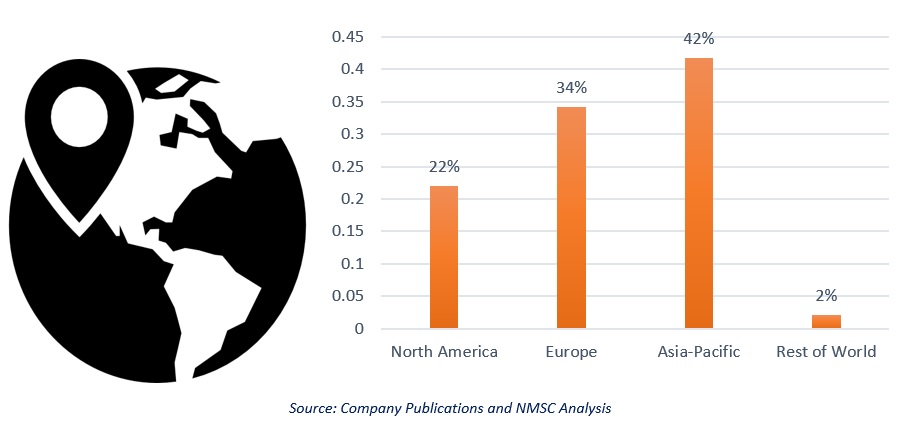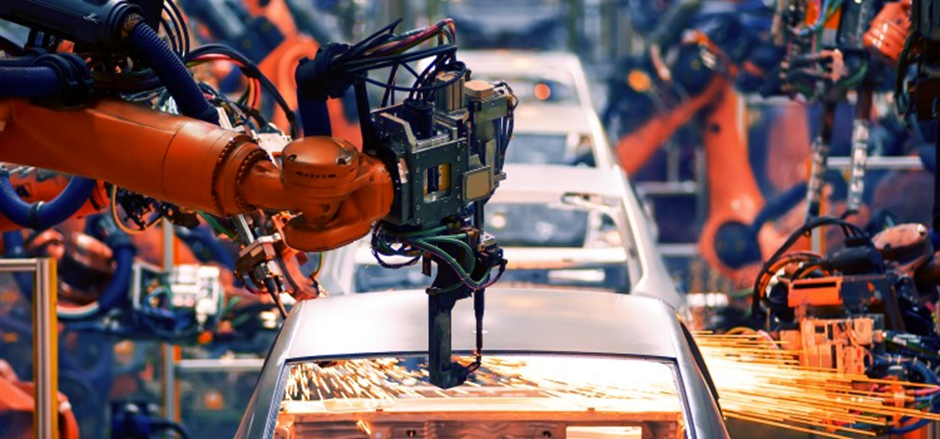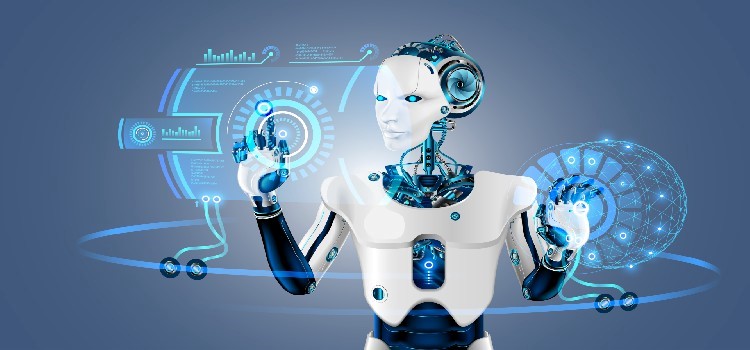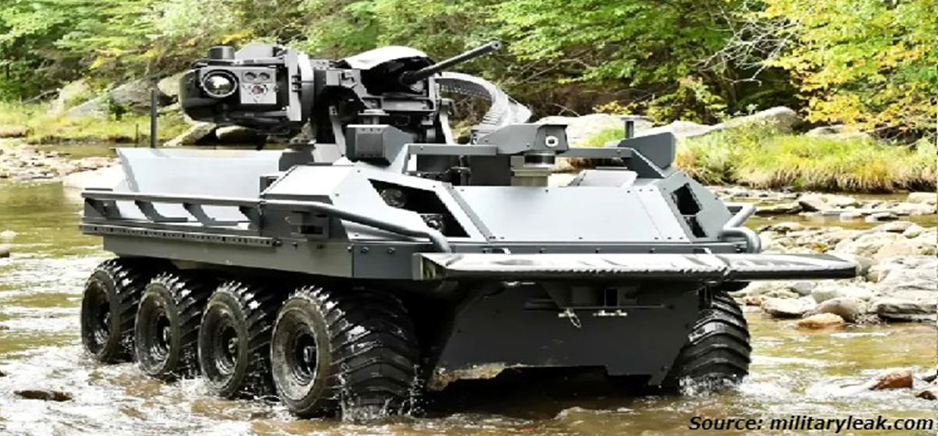How Automotive Robotics is Transforming the Auto Industry
05-Dec-2024
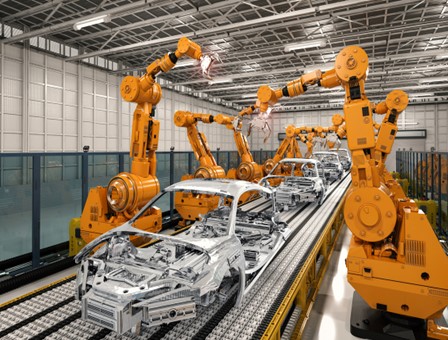
Introduction
Automotive robotics refers to computer-programmed engineering solutions that are extensively employed by automotive manufacturers for performing monotonous and hazardous tasks effectively. Every automotive manufacturing sector manufactures thousands of vehicle parts, which requires a wide range of production techniques.
Automotive robotics and the ongoing developments in automotive robot technology, such as force sensors and vision systems facilitate the manufacturing procedures easy to handle. These robots offer reliability, flexibility, high efficiency, and accuracy. These properties, in turn, are helping the organizations improve quality & production capacity while requiring less room to complete the activities and safeguarding employees from hazardous duties & mishaps.
Automotive robotics performs various tasks such as welding, material handling, assembly, painting, machine tending, and sealing among others. In addition, automotive robots are trained to carry out highly specific jobs repeatedly and without variation, in contrast to human employees who may occasionally make mistakes. This leads to increased product uniformity and higher quality products.
Types of Automotive Robotics
There are different types of automotive robotics that have been developed for a variety of applications in the automotive industry. Some of the common types of automotive robots include-
-
SCARA Modular Robots
Selective Compliance Assembly Robot Arm (SCARA) robots are considered the most systematic robots as they offer x, y, and z axes along with rotator motion. These robots can handle a wide range of operations such as moving objects from one location to another or picking and placing objects before assembly. The SCARA robots also perform operations such as dispensing, screw driving, and engraving.
-
Cartesian Modular Robots
Cartesian robots are mechatronic robots that move along linear axes. These robots are specific kinds of modern robots that operate on three symmetrical (opposite) axes - X, Y, and Z. Cartesian robots have a robotic arm that actuates motion vertically and an above structure that controls motion in the horizontal plane. Cartesian robots display a high degree of accuracy and precision. Cartesian robots are viable for a wide range of applications in industrial settings due to their adaptability, low cost, and simplicity of programming. The various industrial applications include pick & place, process-to-process transfer, assembling system, palletizing & depalletizing and precision spot welding.
-
Collaborative Modular Robots
The newest robot technology, known as cobots, has substantially altered the automation industry. A collaborative robot is also called a cobot or co-robot. Collaborative robot is a robot that works with people, either as a colleague in an assignment or as a guide. Due to their ability to securely cooperate with humans, these robots are collaborative. They are able to do this because of the delicate sensors that give the robot a sense of touch. Also, the cobots are easy to install & simple to operate as well as it is able to work in various stages of the production process since it can quickly learn new skills. The cobots are used to streamline procedures and increase production. This in turn lowers the production cost.
-
Parallel Modular Robots
A parallel modular robot (PMR) is composed of a mobile platform connected to a fixed base by a set of identical parallel kinematic chains, called as legs. Robots with three or more parallel rotating or prismatic axes are referred to as parallel robots. It is a mechanical system that utilizes multiple computer-controlled limbs to support a single common platform or end effector. These robots are employed in a variety of fields, including astronomy & flight simulators, and increasing utilization in the machine-tool business. PMR generally has high precision and dynamic performance, therefore, can be applied to many applications such as packaging and pick & place.
-
Articulated Modular Robots
An articulated robot is basically known as a robotic arm, in which arms are joined to a base that can have two to ten joints attached to them. These robots require less floor area, provide high speed, and perform multiple actions in a single time. They are expected to hold the largest share of the global automotive robotics market during the forecast period. These robots are more widely preferred in comparison to the other types as they are popular owing to their high degree of freedom. Also, they are suitable to be used in multiple applications such as welding materials, automotive assembling, machine manufacturing, and glass handling.
How automotive robots are used in the automotive industry?
In almost every step of manufacturing a vehicle, the automotive production sector uses robots. Thus, the applications of robotics are boosting transformation in the automotive industry. Some of the important tasks performed by automotive robots includes-
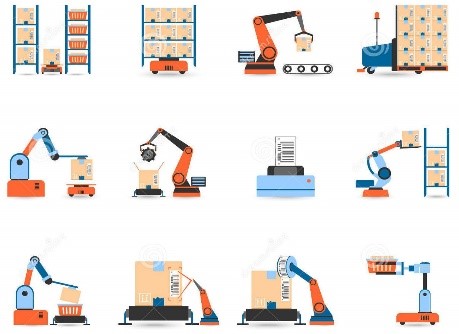 Material handling is an essential step in any manufacturing process. The automotive industry enables increased productivity & efficiency while lowering costs by implementing robot applications and automation for material handling operations. Material handling refers to the use of robots in the movement, protection, and storage of materials & products throughout manufacturing, warehousing, and distribution. The main objective of material handling is to eliminate material handling costs, increase order accuracy and inventory management as well as provide safety to workers.
Material handling is an essential step in any manufacturing process. The automotive industry enables increased productivity & efficiency while lowering costs by implementing robot applications and automation for material handling operations. Material handling refers to the use of robots in the movement, protection, and storage of materials & products throughout manufacturing, warehousing, and distribution. The main objective of material handling is to eliminate material handling costs, increase order accuracy and inventory management as well as provide safety to workers.
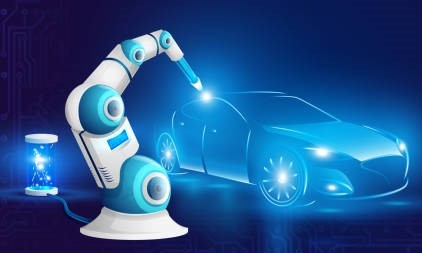 Robots perform exact welds in a highly productive manner, which reduces human error and improves quality. The automobile robots carry out these operations utilizing cameras that allow for visual inspection and sophisticated scanning technology that completely eliminates the danger of missing a weld-required place on the component. It also enables accurate and speedy outcomes, reduced waste, and a higher level of safety. Robotic welding is faster than manual welding because it can access unreachable places and conduct intricate and exact weld lines.
Robots perform exact welds in a highly productive manner, which reduces human error and improves quality. The automobile robots carry out these operations utilizing cameras that allow for visual inspection and sophisticated scanning technology that completely eliminates the danger of missing a weld-required place on the component. It also enables accurate and speedy outcomes, reduced waste, and a higher level of safety. Robotic welding is faster than manual welding because it can access unreachable places and conduct intricate and exact weld lines.
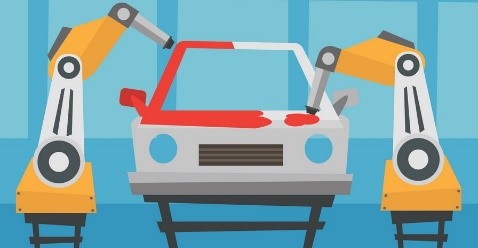 Painting tasks are now more heavily influenced by robots. Additionally, robots spray paint onto the automobile parts at high speed rather than having employees stand for extended periods of time and work with hazardous chemicals. Additionally, the complex parts with curved or angular surfaces such as the engine compartment, trunk, door entries and door rabbet can be easily painted or coated. However, the most common purpose of painting robots is to apply paint, as the name suggests. But they can also be used to apply a wide range of coatings including anti-fingerprint, water resistant and antifog. Moreover, painting robots facilitate uniformity of coating as robots can move at a steady speed and thereby ensuring even & smooth coating.
Painting tasks are now more heavily influenced by robots. Additionally, robots spray paint onto the automobile parts at high speed rather than having employees stand for extended periods of time and work with hazardous chemicals. Additionally, the complex parts with curved or angular surfaces such as the engine compartment, trunk, door entries and door rabbet can be easily painted or coated. However, the most common purpose of painting robots is to apply paint, as the name suggests. But they can also be used to apply a wide range of coatings including anti-fingerprint, water resistant and antifog. Moreover, painting robots facilitate uniformity of coating as robots can move at a steady speed and thereby ensuring even & smooth coating.
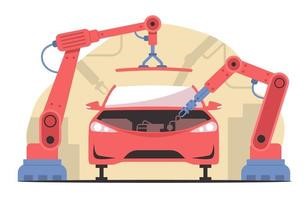 Robotic assembly is the process of building various goods, from large-scale systems to microscopic objects, in the most effective way possible. An assembly robot can place, fit, and assemble components or parts for a product using a variety of capabilities. The various applications for robotic assembly include part identification, part sorting, tool changing and bin picking. When compared to manual procedures, assembly robots have human-like skills and can operate with more control, accuracy, and precision. The benefits of assembly robots include improved productivity, increased efficiency and improved product quality.
Robotic assembly is the process of building various goods, from large-scale systems to microscopic objects, in the most effective way possible. An assembly robot can place, fit, and assemble components or parts for a product using a variety of capabilities. The various applications for robotic assembly include part identification, part sorting, tool changing and bin picking. When compared to manual procedures, assembly robots have human-like skills and can operate with more control, accuracy, and precision. The benefits of assembly robots include improved productivity, increased efficiency and improved product quality.
Future of Automotive Robots
Rapid transformation is occurring in the automobile sector. Automakers are facing certain difficulties as the use of autonomous driving grows and the world becomes more digital. In the field of robotics, there are a lot of fascinating developments, especially in the automobile sector. As a result, there are several advancements in vehicle automation technologies, including robotic valets and self-driving cars. Artificial intelligence (AI), machine learning (ML), computer vision, and deep learning are among the emerging technologies that many companies are investing in to suit consumer needs. Future robots are expected to effectively build safer cars in response to the growing number of accidents and the demand for vehicles.
Market Share Analysis by Region
Automotive Robotics Market Share by Region (2021)
The Asia Pacific region holds the largest market share of the automotive robotics market, which is accounted for 42%; this can be attributed to the increased production of automobiles in countries such as China, India, Japan, and Taiwan. According to the International Trade Administration, China is the world’s largest vehicle market by both annual sales and manufacturing output, with domestic production expected to reach 35 million vehicles by 2025.
Also, the rising shift of consumers towards zero-emission transportation systems, and increasingly strict laws and regulations on vehicle emissions increase the demand for EVs, which in turn further boosts the automotive robotics market in the region. Europe comes second with a market share of 34% due to the presence of several leading automotive manufacturers such as Volkswagen, Mercedes Benz, BMW, and Volvo Cars that are investing heavily in Europe and expanding their business as well as utilizing automation & robotics to cope up with the high demand for electric vehicles, which in turn drives the growth of the automotive robotics market in this region.
Automotive Robotics Market Competitive Landscape
There are numerous companies that are engaged in the manufacturing of automotive robots. Leading players are fortifying their positions through a range of strategies, including the introduction of new products, partnerships, collaboration, acquisitions, and company growth.
Next Move Strategy Consulting recognizes at least 10 biggest players in the market including ABB Ltd, OMRON, Kuka AG, Yaskawa, Fanuc and others.
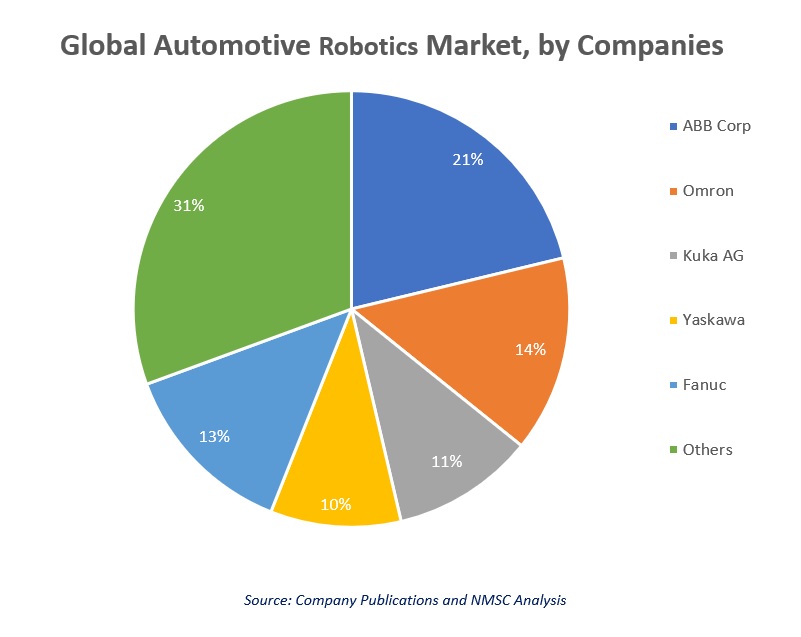
About the Author
 Priyanka Paul is a highly skilled and experienced researcher, with a passion for conducting thorough and accurate research. As a researcher, she is responsible for gathering, analyzing, and interpreting data, and helping her clients to deal with complex business challenges. With a Master's degree in Commerce, she has a strong foundation in data analysis and synthesizing relevant information to support a wide range of projects. She is an avid reader and has a love for traveling and exploring new cultures. The author can be reached at info@nextmsc.com
Priyanka Paul is a highly skilled and experienced researcher, with a passion for conducting thorough and accurate research. As a researcher, she is responsible for gathering, analyzing, and interpreting data, and helping her clients to deal with complex business challenges. With a Master's degree in Commerce, she has a strong foundation in data analysis and synthesizing relevant information to support a wide range of projects. She is an avid reader and has a love for traveling and exploring new cultures. The author can be reached at info@nextmsc.com
Add Comment
Related Blogs
Major Industry Leaders and Their Impact on the Automotive Robotics Market
Automotive robotics market expected to experience rapid grow...
Tech Titans Transforming AI Robots: IBM, Intel, and Microsoft's Influence
According to Next Move Strategy Consulting, the AI Robots Ma...
UGVS and the Power Players: Genetal Dynamics, Qinetiq, and Boston Dynamics
According to Next Move Strategy Consulting, the UGV Mar...




